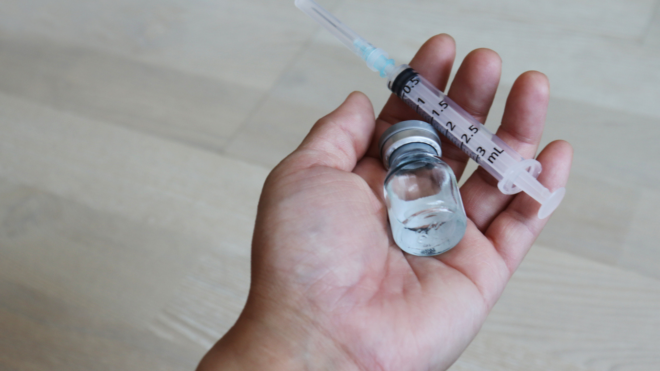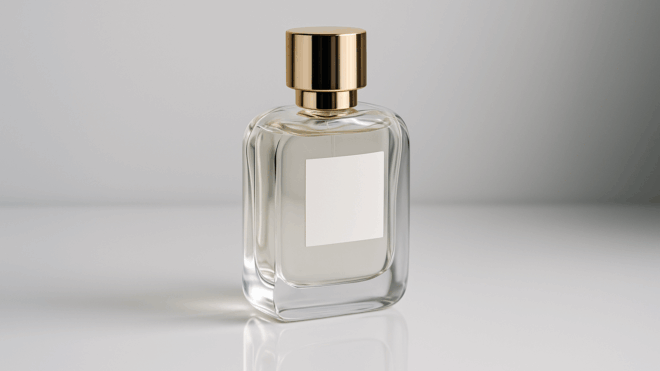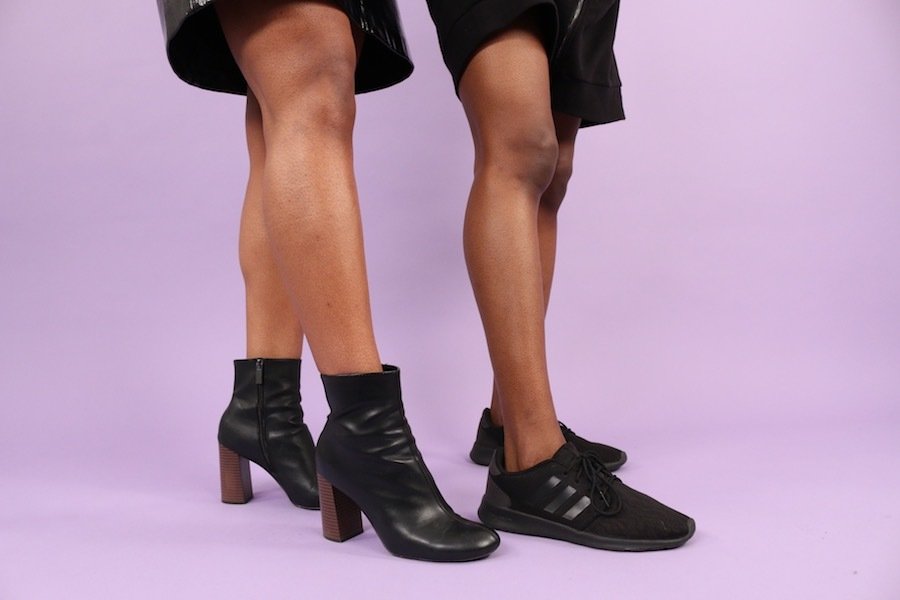
As summer approaches, everyone wants to switch up their look. From armpit facials to hair color and cut changes — summer is the #1 reason to push your boundaries and try something new.
For me, that's showing off my legs: I have a skin condition called keratosis pilaris (KP), sometimes also called "strawberry legs"— and so does one of my co-workers, Mary.
KP is a "harmless" skin condition that causes tiny bumps on your skin that resemble goosebumps or the skin of a plucked chicken, according to WebMD.
Here's what keratosis pilaris looks like on mine and Mary's legs:
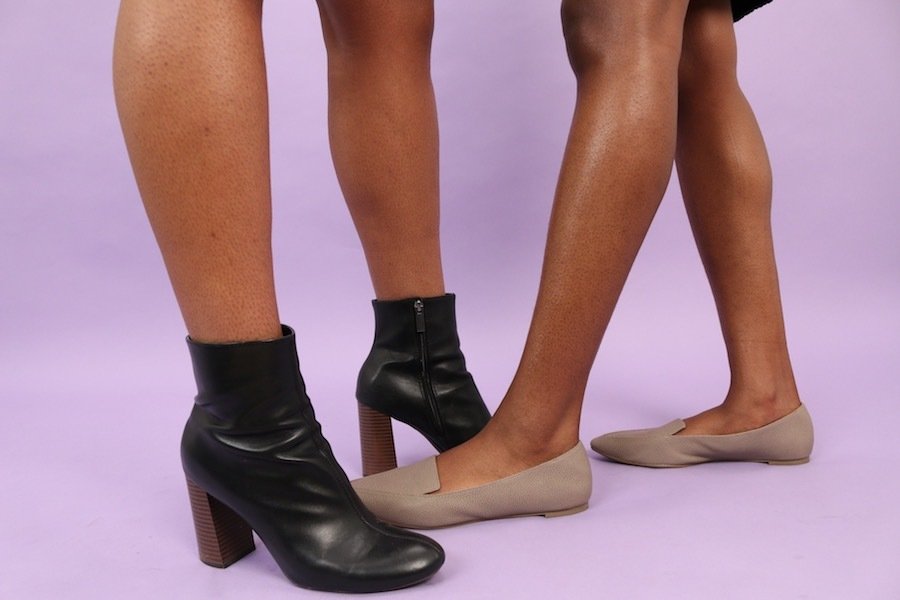
"Keratosis pilaris is caused by a buildup of keratin, the protein that protects skin from infections and other harmful things," Web MD explains. "The buildup forms a plug that blocks the opening of a hair follicle, but doctors don't know what triggers the buildup." It can happen anywhere on the body, but is most commonly reported on arms and legs.
Sometimes KP looks red — hence the term "strawberry legs."
Growing up, neither Mary nor I thought anything about the small, sometimes red dots on our legs. That was just what our legs looked like.
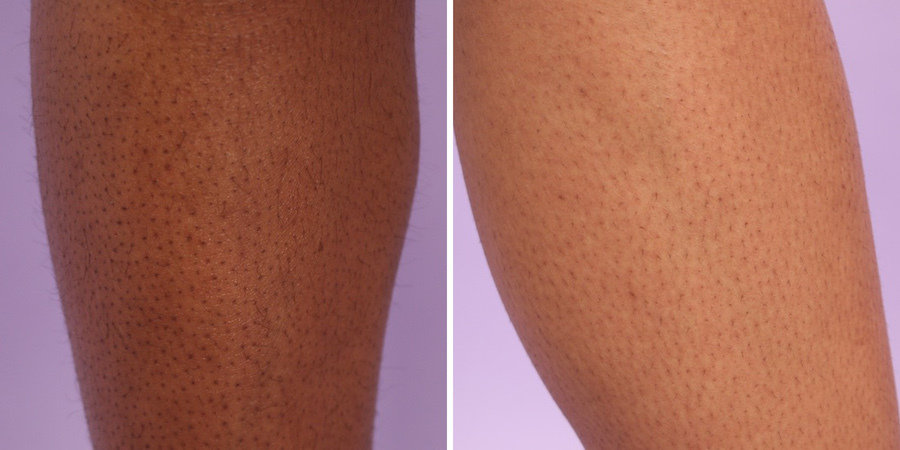
It wasn't until the internet that Mary had a name for the bumps.
"I was perusing the internet and came across the term [strawberry legs], and I saw the similar design on the model's legs so I clicked," Mary says.
"Once I saw what 'strawberry legs' were, I was shook. That was me! I honestly hadn't thought that the dots on my legs were something someone would want to get rid of until I saw the article! Once I saw it, I had to give it a try."
Like Mary, I wasn't aware that my dotted legs were "different."
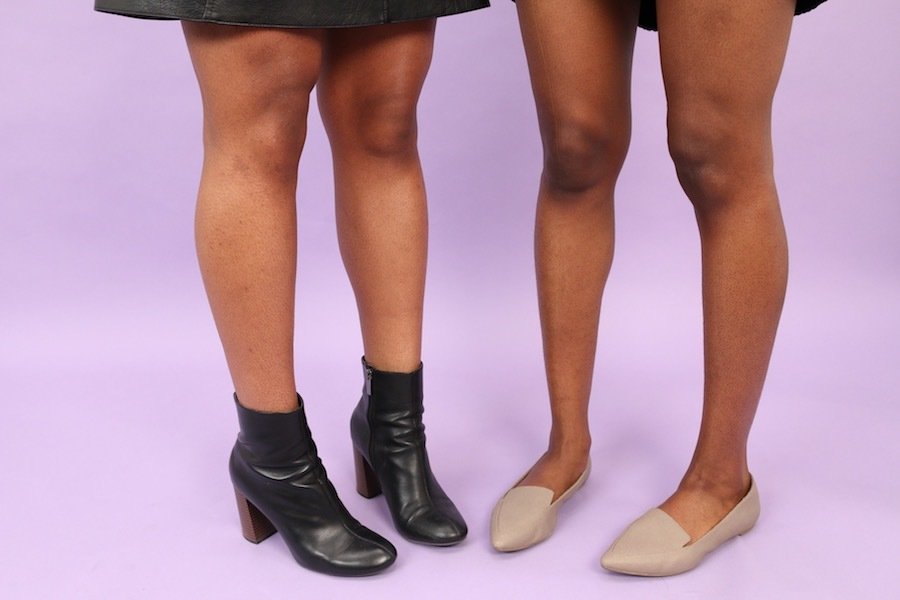
In elementary school, I do recall a creepy boy rubbing on all the girls' legs as we walked by to leave the classroom for recess.
He rubbed every girl's legs commenting on how smooth they were and when he got to mine, he said, "Your legs are kind of bumpy!"
I would have been embarrassed if I were older, but at the time I just thought it was because the other girls' parents allowed them to shave or wax earlier than my mom did.
I never thought about it again until Mary asked me about "strawberry legs."
We both thought the bumps on our legs were permanent, and were surprised to find out people have ways of getting rid of the keratin dots.
One of the most popular products people use to treat it is AmLactin.
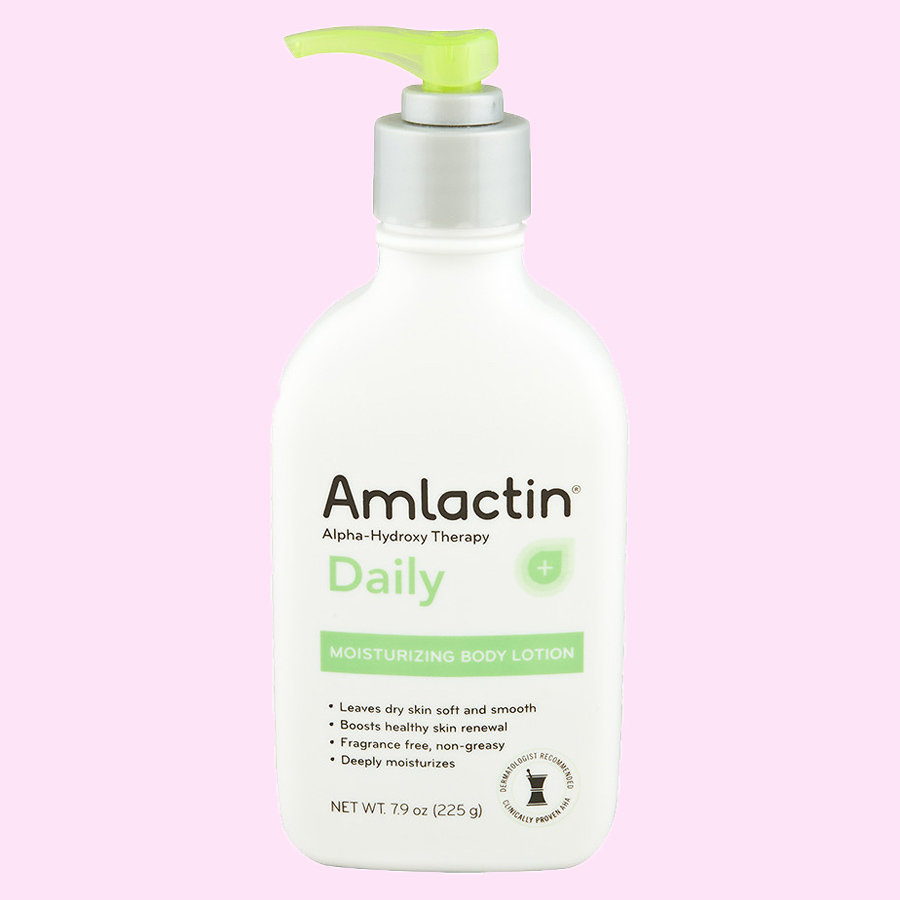
AmLactin ($12.99, Target) is a body lotion with 12% lactic acid, is pH-balanced for the skin, and works as both an exfoliant and moisturizer. Lactic acid is generally used to reduce the bumpiness caused by KP, and many people find that it helps reduce the strawberry-like redness and bumpiness.
Mary and I decided to give it a thorough three-week trial that involved applying this lotion two times each day.
We were really curious to see if it would give us clearer, smoother legs to slay the kids with this summer!
After one week of the AmLactin, this is what our legs looked like.
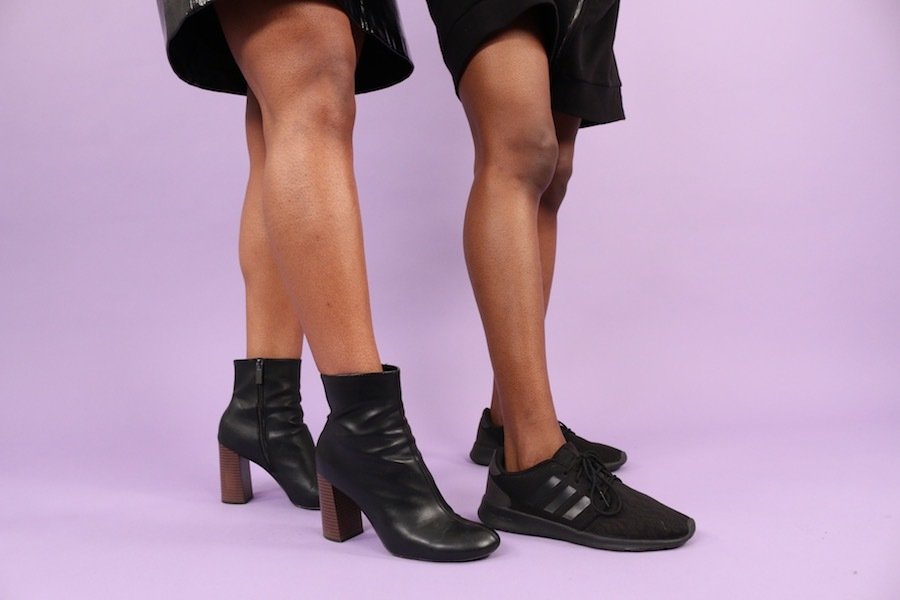
After only one week, we weren't expecting anything drastically different. Most skin products will take more than one week of use before you see any real results.
The primary thing we noticed — other than how well-moisturized our skin felt — was the strong sulfuric scent of the AmLactin lotion.
Mary normally wears lotion with a lightly floral scent, and I use fragrance-free everything, so the smell was jolting at first.
Luckily, the strong smell fades over time.
Here's a close-up of after one week of use.
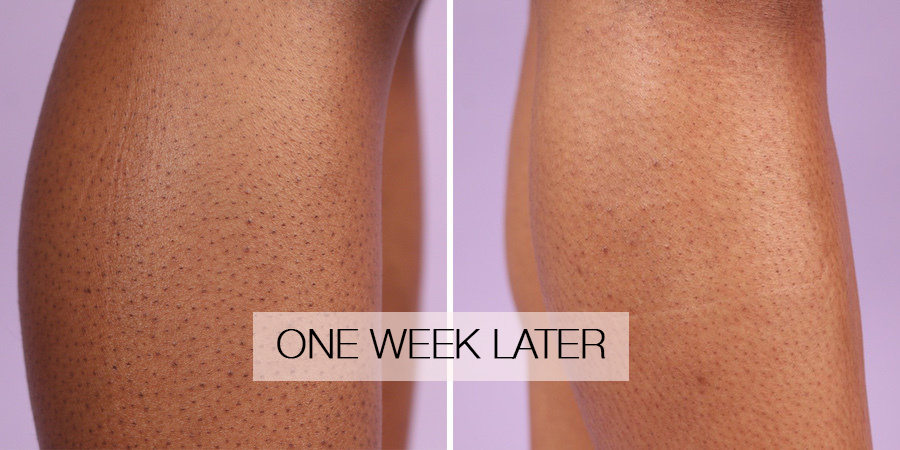
My leg is on the left while Mary's leg is on the right.
Do you see a difference between our legs in the photos above that were taken before we started using AmLactin and this one?
Two weeks into our AmLactin challenge, and this is how our legs looked.
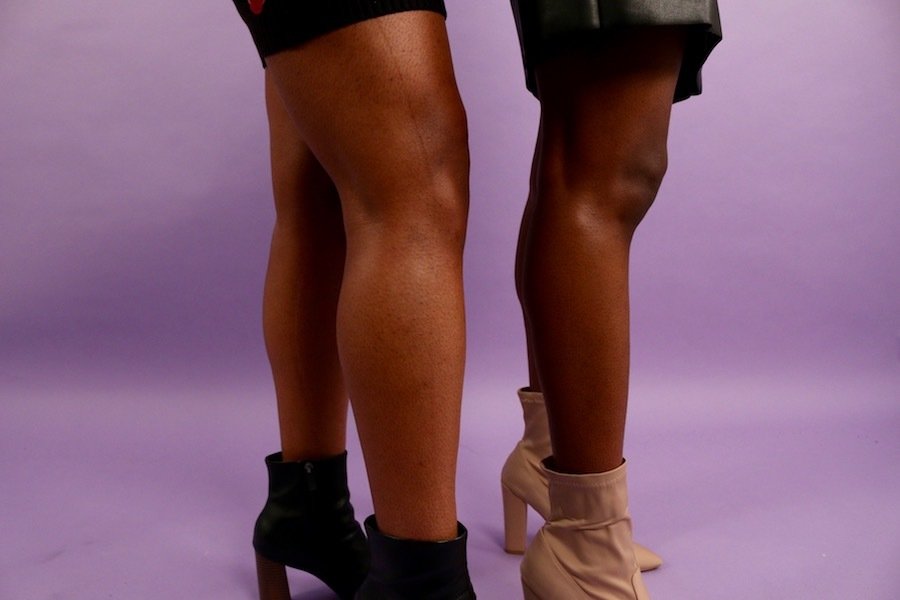
Peep our legs close-up!
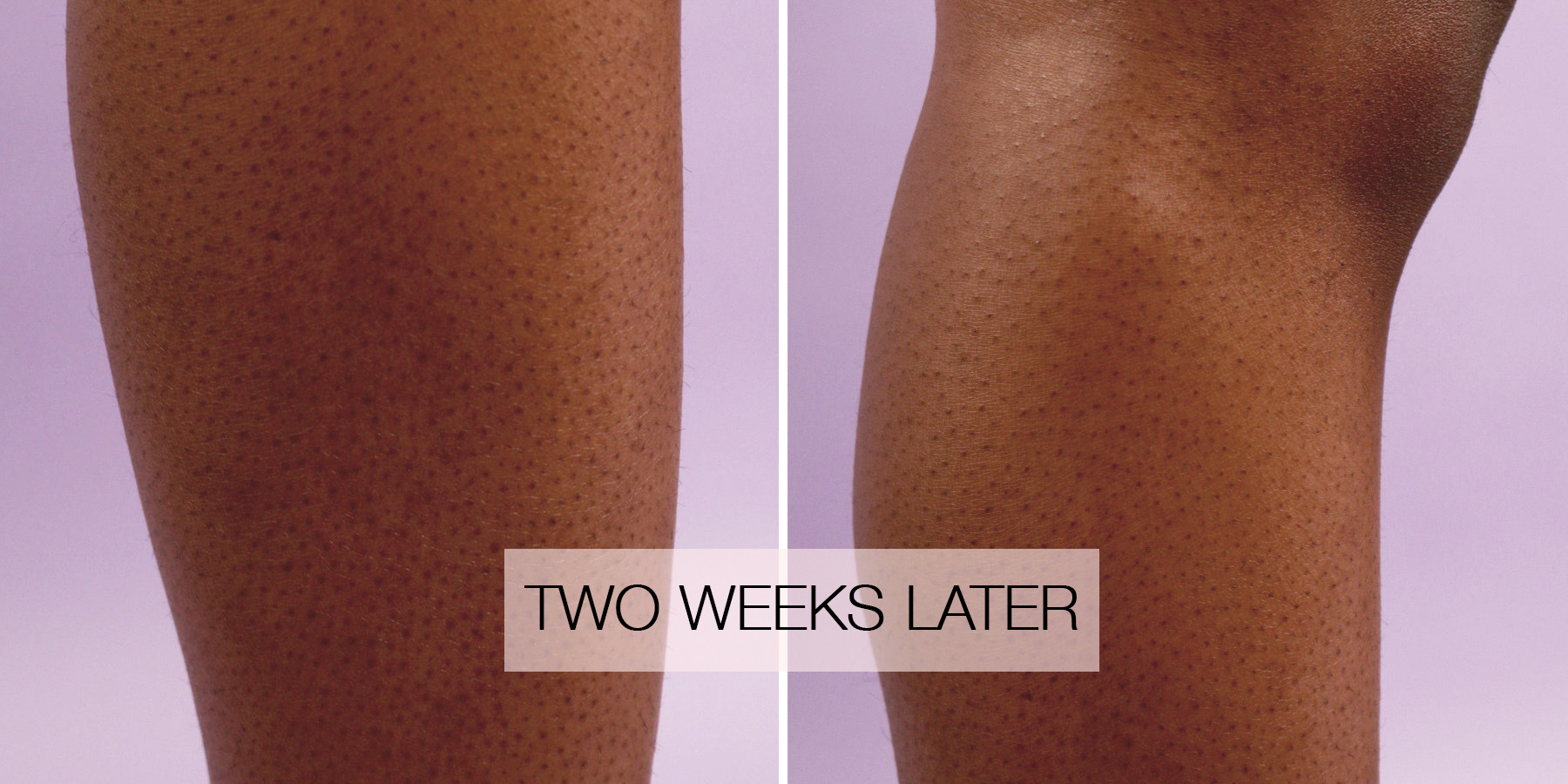
I still had not witnessed any changes. After 14 days, I was losing hope that AmLactin was going to clear my legs of their strawberry print.
After three weeks of trying to rid ourselves of KP bumps, this was how our legs looked.

Unfortunately, neither of us saw a dramatic difference in how our legs looked or felt.
Up close, those dots are still quite visible!
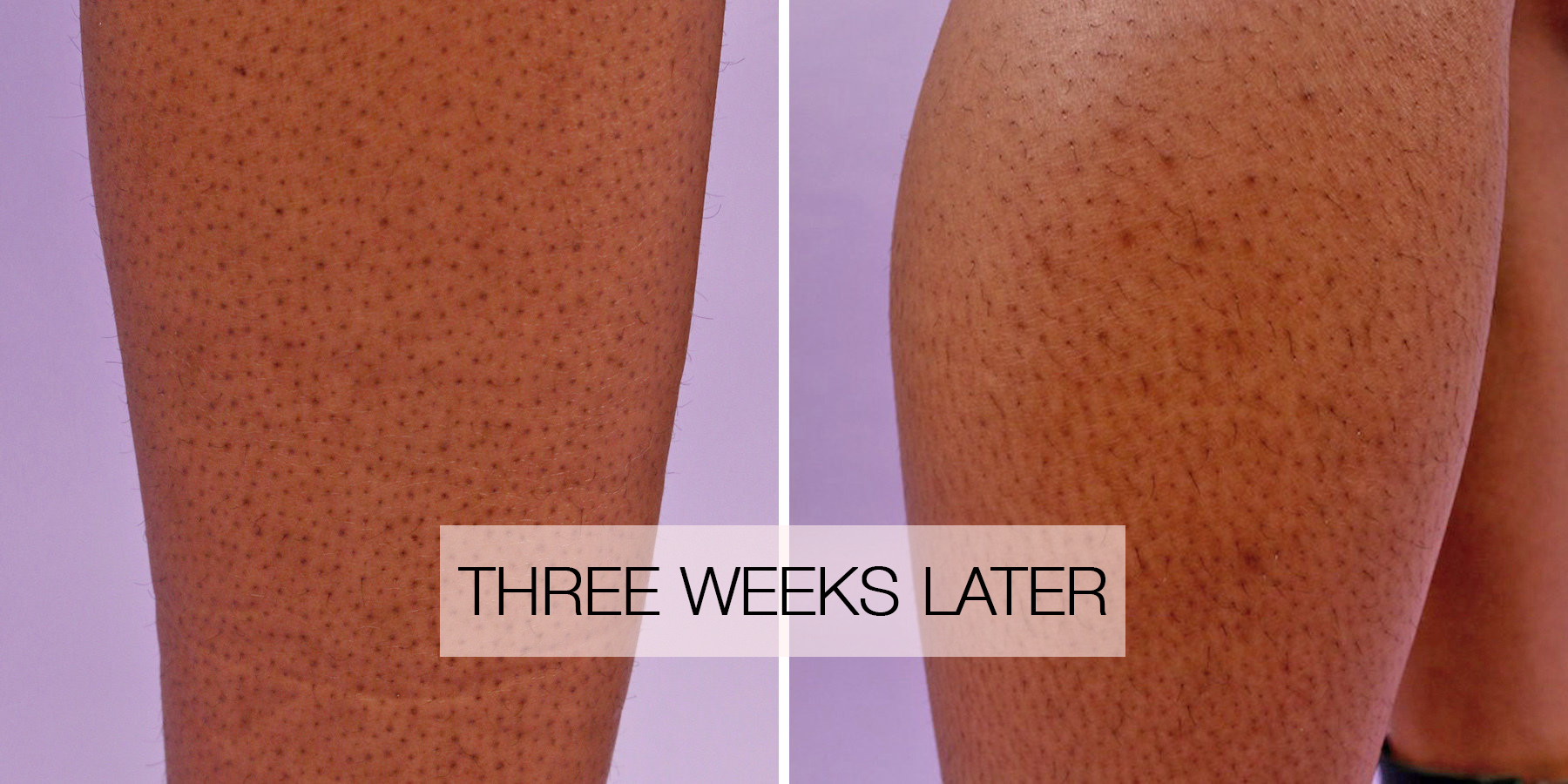
Luckily, we've lived with — and been getting complimented on — these legs our entire lives, so we weren't devastated by these non-results.
The upside is Mary believes her legs have NEVER felt smoother thanks to the AmLactin.
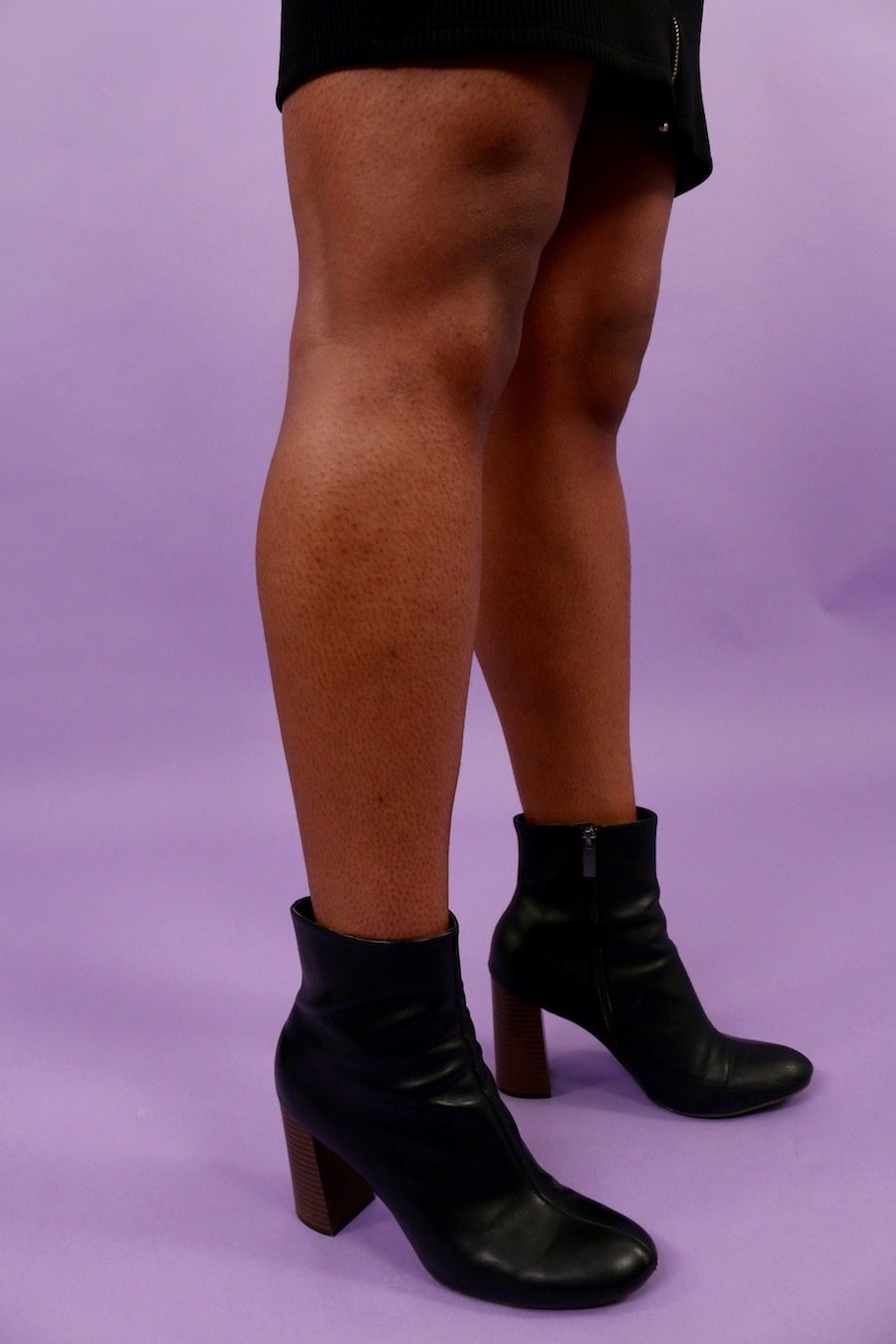
"It didn't change the look of my legs as far as strawberries go, but it did improve the feel of them," she says.
"With it being so cold and dry in the air, it was nice to have another layer of moisture, so I think that paid off! Growing up I was always encouraged to use lotion, and so I've tried a ton of them. From Jergens to Aveeno to Cetaphil. But I never tried AmLactin, and I'm really glad I did! Could be a good way to prep for summer."
After three weeks of treatment, did we get rid of our strawberry legs? Not exactly — but that's not a bad thing.

Keratosis pilaris is a medical condition, and like any medical condition, treatment for it varies from person to person. So, while AmLactin didn't clear up our strawberry legs, I don't doubt that it can (and does) help treat other people's KP.
Despite having the same condition with very similar symptoms, Mary and I had totally different experiences with the same product! This shows that the best way to treat strawberry legs is likely to head to a dermatologist to get the *real* tea on what truly works for your skin.
I probably will ask my dermatologist about treatment options at some point, but in the meantime, neither Mary nor I are pressed about our KP. Why try to "fix" something about ourselves that we didn't even have a problem with to begin with?
"I definitely am more aware of [my legs], but I think it's something I want to embrace," Mary shared. "If it's something health-wise I should be concerned about then OK, but if it's just an aesthetic thing, then I'm good."
Moral of the story? You don't have to change anything about yourself just because the internet considers it a "flaw."
Plus, strawberries taste good and are pretty AF, so I couldn't think of a better fruit for our legs to be named after.
Strawberry legs for the MF'ing win, baby!


